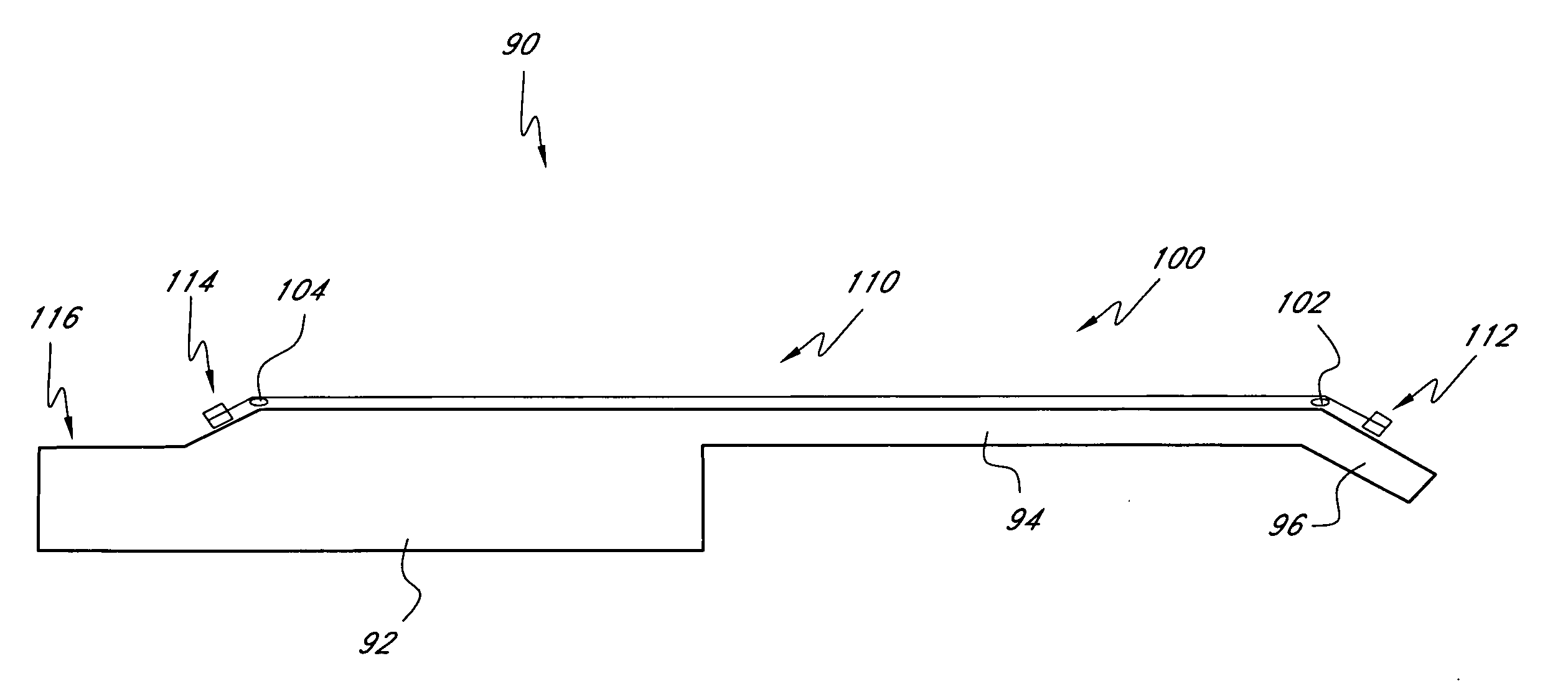Stringed instrument that maintains relative tune
- Summary
- Abstract
- Description
- Claims
- Application Information
AI Technical Summary
Benefits of technology
Problems solved by technology
Method used
Image
Examples
Embodiment Construction
[0043] The following description presents embodiments illustrating aspects of the present invention. It is to be understood that various types of musical instruments can be constructed using aspects and principles as described herein, and embodiments are not to be limited to the illustrated and / or specifically-discussed examples, but may selectively employ various aspects and / or principles disclosed in this application.
[0044] With first reference to FIG. 1, one embodiment of a musical instrument string arrangement 30 is illustrated. In the illustrated embodiment, a single musical string 32 is routed through a plurality of rotatable pulleys 34. A fixed end 36 of the string 32 is affixed to an anchor mechanism which is preferably affixed to a body of the associated musical instrument. A torque end 38 of the string 32 is connected to a mechanism, such as a tuning knob, that is adapted to tighten the string, thus increasing the tension throughout the musical string 32.
[0045] In the il...
PUM
 Login to View More
Login to View More Abstract
Description
Claims
Application Information
 Login to View More
Login to View More - R&D
- Intellectual Property
- Life Sciences
- Materials
- Tech Scout
- Unparalleled Data Quality
- Higher Quality Content
- 60% Fewer Hallucinations
Browse by: Latest US Patents, China's latest patents, Technical Efficacy Thesaurus, Application Domain, Technology Topic, Popular Technical Reports.
© 2025 PatSnap. All rights reserved.Legal|Privacy policy|Modern Slavery Act Transparency Statement|Sitemap|About US| Contact US: help@patsnap.com



